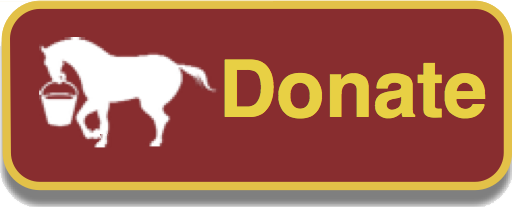One horse was found starving and tied to a tree at a park in Long Beach. Another was found so emaciated in his stall that his hip bone had pierced his hide. And then there was the stable of skin and bones stallions found chewing each others tails off for something to eat.
They are some of the 84 horses Susan Peirce has rescued and brought to the Huntington Beach equestrian center where she and her ever growing band of volunteers has fed them, groomed them, loved them.
In their care, the horses have gained back hundreds of pounds. And their dignity.
See stunning before and after photos.
But now, two and a half years after Susan started Red Bucket Equine Rescue, they must leave their Huntington Beach stalls.
Susan has until September. The countdown is on.
She is confident she can pull it off though.
Even if it means losing sleep. Or losing money. Or losing her sanity, as it sometimes seems.
“I’m doing what I’m supposed to be doing,” she told me. “I’m committing the rest of my life to this.”
What she wasn’t to know is, who is coming along for the ride?
Harlow.
That’s what she named the first horse she saved.
Susan used to go out to the Inland Empire with her husband Dave when he was training his border collies. While he practiced his hobby, she stumbled upon a nearby stable.
There she saw a scrawny horse and learned from the stable owner it had been left there, abandoned. She and her husband bought a red bucket, filled it with carrots and spent the next six hours trying to get the horse to trust them enough to come near them and eat. She named the horse Harlow and brought her home, renting a stall for her at the Huntington Central Park Equestrian Center.
Six months later, in January 2009, the stable owner called Susan to say there was another abandoned horse. This time it was starving and in pain with colic, could she take it?
She returned with him — and eight others.
Now, boarding a horses isn’t cheap. It costs $600 a month, and that doesn’t include doctor bills.
Susan sent out emails to the horse community, asking for help. Mary Behrens, the owner of the equestrian center, phoned to pledge her support. She gave Susan some stalls — and her credit card to buy the horses feed.
Susan gave each of the horses a name. And their own red bucket to eat out of (with their name in black letters). There would be no herd feeding here. Each horse would be treated like an individual, with individual diets and goals. The Red Bucket Equine Rescue was born.
Since then, the horses haven’t stopped coming. They have been rescued from an Inland Empire breeding scandal, an abandoned kid’s camp in Malibu, a truck headed for a slaughter house, and sometimes Orange County households.
One phone call came from a San Juan Capistrano woman who was in tears because she couldn’t afford to keep her horse Disco, a family pet, so she rented him out for riding lessons, only to have him go lame. Now she couldn’t afford to pay a vet. Could Susan take him and fix him?
But for every sad story, there is one with a happy ending.
The horse with the hip bone piercing its side? That’s Caspian. When he was found, it was in a stall that hadn’t been cleaned in so many months that a crater filled with urine and manure had formed under him. He has since gained more than 400 pounds; a gorgeous, shiny creature happily training under saddle.
Of the 84 horses taken in, 32 have been adopted back out, in one case to a ranch in Colorado with 300 acres of open land, a horse’s dream. When a horse leaves, its new owner takes its red bucket “as a concrete reminder that in addition to nourishment, you have committed to a special, loving relationship with a truly remarkable animal … Forever.”
Shirley Puga, Executive Director of the National Equine Rescue Network, has worked with dozens of rescues in the southwest and considers Red Bucket “nothing short of amazing.”
Red Bucket has 168 volunteers. Some of them, including Huntington Beach vet Jenn Winnick, have spent entire nights at the stable, tending to sick horses recovering from whatever nightmare they’ve endured.
“Every single horse there is treated like an individual,” Puga says.
That’s why she was worried when she learned Red Bucket was in trouble.
“People are losing homes and jobs, and horses are often the first thing to go before the family dog or cat, due to the expense. Horse owners are in trouble. And now donations are down so the rescues are struggling. Costs of hay are up. Fuel is up. It’s like a perfect storm.”
Red Bucket’s budget is $360,000 a year, all from donations. Mary has always picked up the slack. Now she has asked the rescue to become more self sufficient.
“For two years she’s financed this,” Susan says. “She’s extremely compassionate. I am forever grateful for her. But we can’t continue to drain her.”
In an email from Idaho, where she has a house, Mary wrote that working with Red Bucket is an honor. “For me, being able to see starving and neglected horses flourish within the rescue is my motivation. After all, it is all about the horse.”
While the horses need to leave their stalls, Mary is letting Red Bucket move them to a plot of bare land she leases next to the equestrian center. It’s up to Susan, though, to find fencing and shelter.
“I haven’t slept in a long time so I’m very worried about this,” says Susan, who also has a son in college and a consulting business to run. “I’m terrified. I have the plan, I just need the money.”

